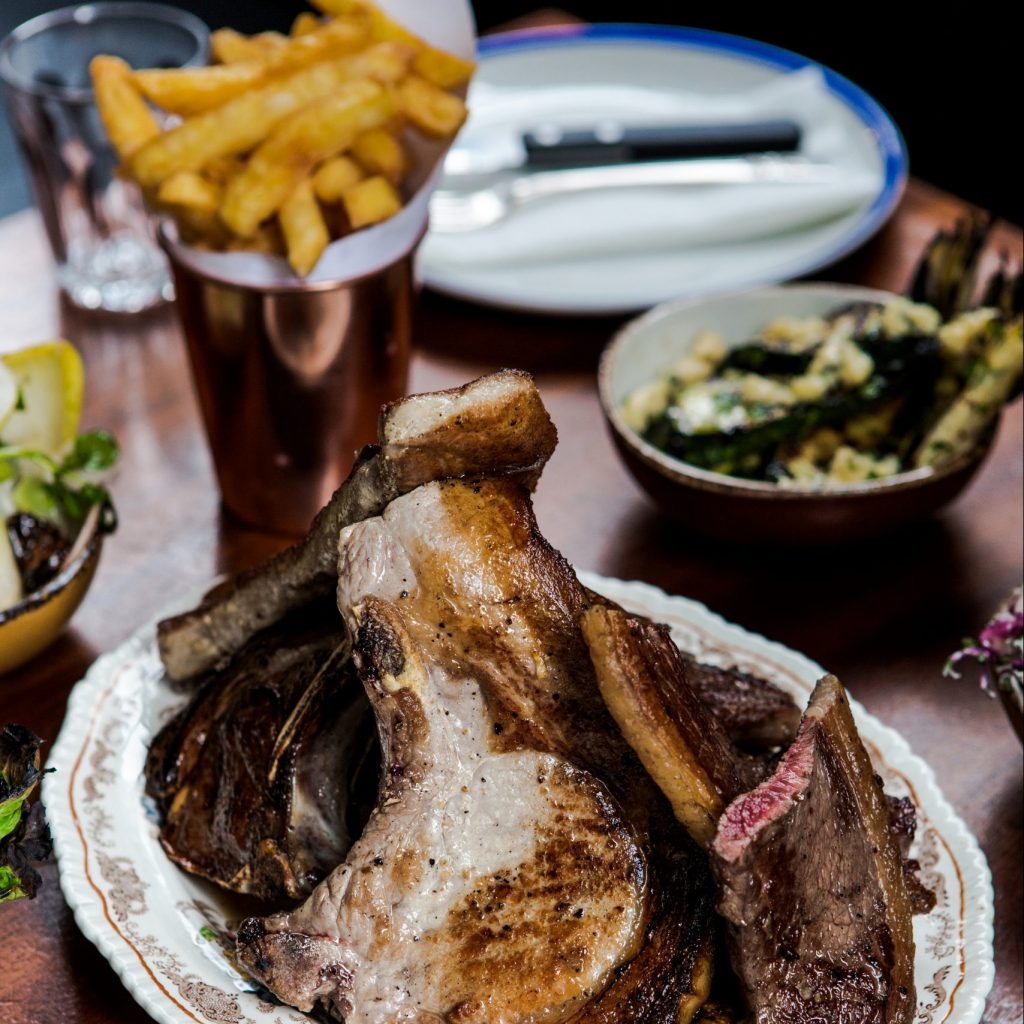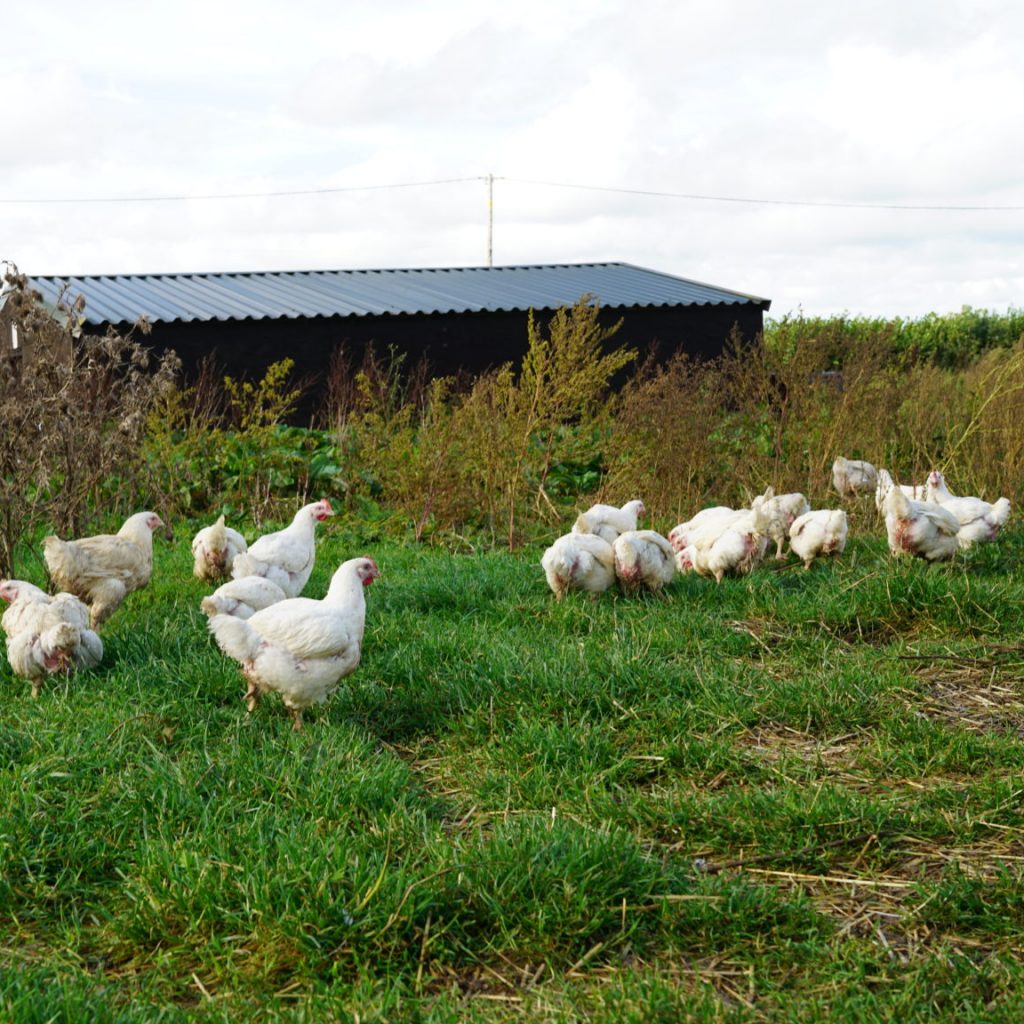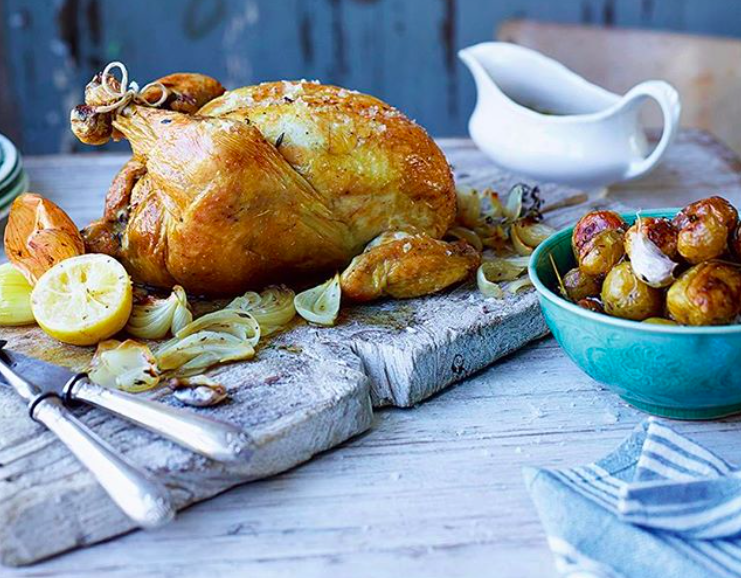Organic bacon made without nitrates. Here’s what you need to know.
The bird is the word. Chicken remains by far one of Britain’s favourite ingredients, accounting for half of our meat consumption. Its rise in popularity is in so small part thanks to it now being incredibly cheap to buy. It’s also due to its superfood-like reputation as the low-fat, high protein, cancer-risk-free alternative to cuts of red meat. But is chicken really that healthy?
Unfortunately, the reality is that the pedestal on which we hold this white meat is at best meaningless and at worst harmful.
This is because its low cost comes at a high-price for both our health and for the birds.

Is chicken healthy? Protein
Chicken is the go-to choice for pretty much any modern-day diet and fitness plan. But we require a lot less protein than these trends lead us to believe.
A healthy person requires about 0.8 grams of protein per kilo of weight. So, someone who weighs 60-70 kilos needs around 50 grams a day.
If chicken was your only protein source this is equivalent to around one and a half chicken breasts – but it’s not.
“Chicken is a good source of protein but so are lots of other foods you eat throughout the day like fish, eggs, beans, pulses, soya, nuts and dairy. These are also valuable sources of iron, zinc, vitamin B12, soluble fibre and omega-3 fatty acids, which are all essential for good health,” advises registered dietitian Christiana Pavlides.

Is chicken healthy? White meat vs red meat
Our insatiable appetite for chicken has been further reinforced by white meat also being less associated with cancer than iron-rich red meat.
However, it’s not a clear-cut case of white meat being better. Red meat is also good for you – in moderation. The problem is that we eat too much of it.
Plus, red meat is typically found in a lot of unhealthy ‘junk food’, such as burgers, which are often served with a side of chips and washed down with a sugar-filled fizzy drink. You see the problem?
Is chicken healthy? Not all chicken is created equal
The way animals are farmed also has a huge impact on their quality and nutritional value. People who are choosing cheap chicken for health reasons are being sorely misled.
Chickens reared in really close proximity get ill and are administered antibiotics.
Aside from the whole cruelty aspect of this, in terms of our health this is not a good thing at all.
According to the Soil Association, intensively reared pigs and poultry account for 85-95% of UK farm antibiotic use.
READ MORE:
This is creating an ‘army of deadly superbugs’ such as E.coli, which is resistant to critically important drugs.
At a more extreme end of the scale, it can cause meningitis, blood poisoning and severe urinary tract infections.
Passing from animals to people via the meat we eat, E.coli has been found in meat sold in the seven major UK supermarkets and is predicted to kill one in every 10 people by 2050. So is chicken healthy? Not when it’s reared this way.
Free-range and organic meat, especially, has much lower level usage of antibiotics.
Also, studies are sowing that organic meat has around 50% more omega 3-fatty acids – which is good for our joints, brain and heart – and that it is also lower in the more unhealthy saturated fats.

The reality of modern day chicken farming
To meet consumer demand a staggering 950 million chickens are farmed in the UK each year. But, that’s using the term ‘farming’ lightly.
More than 90% of poultry is reared in intensive conditions, with the number of higher-welfare chickens in the UK at its lowest in a decade.
Commercial farming has become a very vertical industry, which is controlled by just a handful of companies, globally.
These breed fast-growing chickens, most commonly the Ross bird.
Intensively reared pigs and poultry account for 85-95% of UK farm antibiotic use.
“[Huge processing plants] buy those birds and supply them to contract farms to rear them. They provide the feed and even tell the farmer what the temperature inside the sheds should be,” says Compassion In World Farming’s chief policy advisor, Peter Stevenson.
“These farms are so inhumane but there’s not really anything even a good farmer can do to improve conditions because it’s so tightly controlled.”
According to the RSPCA, if a newborn baby grew as fast as your average supermarket chicken by its third birthday it would weigh 28 stone.
“I don’t think people realise just how much these animals are suffering,” says RSPCA poultry welfare specialist, Kate Parkes.

The true cost of free-range and organic chicken
De-boned and skinless breasts, the nation’s favourite cut, bear little resemblance to the animals they come from, which makes it easier for us to ignore the realities of modern day farming.
However, following the supermarket chicken safety scandal uncovered by the Guardian and ITV news in 2017 and headlines about US-style chlorinated-chickens potentially heading to the UK following Brexit, consumers are becoming more aware of what’s going on behind the sanitised plastic packets of ready-to-cook meat.
Sales of free-range and organic chicken are slowly on the rise.
However, higher-welfare still only accounts for around 5% of all chickens sold.
The biggest barrier for consumers is cost. It is around three times more expensive than the cheapest chickens.
A slower-growing free-range chicken on Farmdrop starts from around £10.75 and the equivalent organic chicken costs £12.75. At the industrial end of the spectrum, a whole chicken on the supermarket shelves costs as little as £3.18, in a sandwich it’s just £1.70 and it can be found in a bucket with some chips for £2 on pretty much any high-street.
The truth is the only way to ensure better welfare and nutrition is to opt for slower-growing free-range or organic chicken.
Commercial farms, including the majority of free-range bought in the supermarkets (typically slaughtered at 56 days), generally rear the fast-growing Ross bird.
“The whole evolution of the Ross bird is basically down to people wanting breast meat,” says Nick Ball, founder of free-range Fosse Meadows chicken farm in Leicester.
“It has very small legs because nobody really wants to buy them and enormous breasts. The downside is this means it can’t walk very well.”
In an industrial system the aim is to get poultry to the supermarket shelves as quickly as possible. But slower-growing free-range farms such as Sutton Hoo, Castlemead and Fosse Meadows sell to butchers shops and farmers markets, where quality is what counts.
They’re two completely different production systems,” says Stuart Perkins, who runs free-range chicken farm Castlemead Poultry in Somerset.
“The number one difference is welfare – I’d rather see birds running around in a free-range environment, allowing them to forage and eat bugs and seeds in line with their natural behaviours.”
Fosse Meadows chickens grow to 81-days: “Chickens go further and get more curious as they get older, so this essentially gives them more opportunity to roam,” says Nick Ball. “It also gives you a maturer flavour.”

These farms tend to opt for slower-growing breeds, from Hubbard. Their birds are fed on cereals that are grown on or nearby the farms, with a lower content of protein in their feed, so they grow at a much more natural pace. Castlemead chickens reach maturity around 70 or 80 days.
“The older a bird is, the more flavour. It’s a much firmer meat and there’s more fat on the bird, so the eating quality is much better,” says Perkins.
A question of taste: from farm to plate
Thanks to being given space to roam – as opposed to the equivalent of a space the size of an A4 piece of paper in a shed to live on – the muscles on free-range and organic birds have been worked and developed, so they benefit from a slower cook to make them more tender.
“When a bird is slow grown you can taste it,” says Rosie Birkett, chef and author of A Lot on Her Plate.
“There is so much flavour. When roasting a chicken it fills the house with the most incredible scent.”
Although breast is the most popular part of the chicken for majority of consumers, Birkett finds it one of the least interesting cuts in terms of flavour.
She says: “Thighs are one of my favourite parts, they have a bit more fat and are on the bone so plenty of flavour. At this time of year I like to marinade thigh with citrus zest and juice, garlic, shallots, woody herbs, a little honey and olive oil. Slow-cook them along with the wings and squeeze over some caramelised orange. It pairs really well with bitter leaves like chicory or radicchio.”
Using the carcass to make stock also means you get full value from your bird. Simply slowly poach it with half a carrot, onion, leek and bay for the most delicious stock to use as a base for soups, risottos and pasta.
Written in collaboration with Farmdrop

